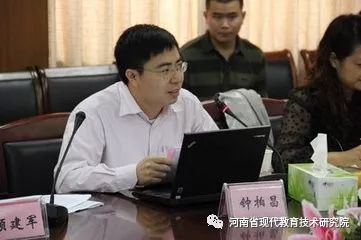
Author: Zhong Baichang,Nanjing Normal University Collaborative Innovation Center for Basic Education Talent Training, Jiangsu, Nanjing 210097. Professor, PhD, research areas include information technology education, educational technology basic theory, etc.
Abstract: Maker education is an engineering education that cultivates students’ comprehensive practical abilities through the form of creation. This article briefly reviews the historical background and essential connotations of the emergence and development of maker education, proposing that to carry out maker education, three “realizations” need to be achieved: ① Utilize various technological activities to carry out maker education, achieving multi-level penetration; ② Utilize various spaces for maker education, achieving all-round development; ③ Utilize various teaching staff for maker education, achieving wide-field teaching. The article also argues that popularizing maker education requires a systematic support: ① Launch core competencies, quality evaluation, and condition construction standards for maker education; ② Build supporting prerequisite courses; ③ Conduct teacher training and establish regional maker education alliances; ④ Carry out various forms of evaluation activities; ⑤ Optimize resources and build maker spaces according to local conditions.
Keywords: Maker, Maker Space, Maker Education, STEM Education
The term “Maker” originated from Premier Li Keqiang’s speech during his inspection of Chaihuo Space in Shenzhen and the government’s initiatives to vigorously develop co-creation spaces in the 2015 government work report. Today, makers and maker education have become a hot topic in China’s education sector. In fact, prior to this, some primary and secondary schools in China had already begun to establish maker spaces and carry out maker education practices, such as Beijing Jing Shan School and Wenzhou Middle School in Zhejiang Province. However, overall, as a new phenomenon, the participation in maker education remains quite small, and its development status is not ideal, urgently requiring necessary management and guidance from educational authorities. In October 2015, the research group led by the author initiated a survey titled “National Survey on the Development Status of Maker Spaces in Primary and Secondary Schools” (hereinafter referred to as the “Survey”) targeting 69 schools in the China Youth Maker Education Alliance. The survey results showed that 53.6% of the leaders of primary and secondary school maker spaces believed that the implementation of maker education in their schools was average or not ideal, while 91.3% of the leaders firmly believed that the future development of maker education would only get better. As promoters and practitioners of maker education, we need to maintain a cool-headed reflection amidst the “maker education craze” and have a clear understanding of the essence and forms of maker education.
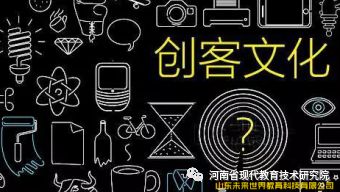
1. The Historical Background of the Rise of Maker Education
Undoubtedly, the rise of maker education is closely related to technological progress, but as an educational thought and activity, its historical background is more complex and diverse.
1.1 The New Industrial Revolution Provides Talent Development Needs for Maker Education
The new industrial revolution, represented by Germany’s “Industry 4.0”, depicts the future vision of manufacturing, proposing that after the applications of the steam engine, mass production, and electronic information technology in the three previous industrial revolutions, humanity will usher in the fourth industrial revolution characterized by information-physical fusion systems, highly digitized and networked production, and machine self-organization (intelligentization). In short, the essence of Industry 4.0 advocates an industrial technological revolution that emphasizes the fusion of virtual and real aspects. Clearly, the realization of this industrial revolution requires a large number of talents proficient in virtual and real fusion skills, and maker education undoubtedly meets this need.
1.2 Technological Innovation and Transformation Provide a New Cultural Foundation for Maker Education
The integration and development of science and technology have not only given rise to the information society and knowledge society but have also driven changes in technological innovation models, with Innovation 2.0 receiving widespread attention from the scientific community and the general public. Innovation 2.0 refers to the second-generation innovation model oriented towards the knowledge society, which shifts from professional scientists developing technological innovations in laboratory environments for users to passively use, to the final users of technological innovations being able to directly participate in the entire process of developing and promoting technological innovations through public innovation platforms. In other words, the general public is no longer just passive recipients of technological innovation but can become innovators under the conditions of a knowledge society, participating in the innovation process according to corresponding rules (technical standards) and playing a dual role as consumers and creators. If Innovation 1.0 starts from technology, then Innovation 2.0 is a typical human-centered innovation model, characterized by “user-centered, social practice as a stage, and collaborative and open innovation as its features.” This innovation model is the cornerstone of mass innovation and also the cultural foundation of makers and maker education.
1.3 The Open Source Movement Provides Guidance of Open Spirit and Technical Support for Maker Education
The open source movement is a cultural phenomenon in the field of computer science that originated from hackers’ pursuit of sharing wisdom and freedom. Its significance lies in open source code, information sharing, and free use. The culture that actively promotes the development of human civilization in the open source movement has permeated fields such as information, education, and health, and has even integrated into philosophy, providing rich educational resources and experiences for maker education, creating a large number of makers who are willing to share. Moreover, the open source movement directly provides the technical conditions for the popularization of the maker movement and maker education. For example, the famous open-source hardware Arduino provides various low-cost components needed by makers, allowing the maker movement to transition from the elite class to the general public, making maker education possible; digital design, 3D printing, and other production technologies can quickly shape various ideas, providing low-cost and fast means for realizing creativity.
1.4 The Maker Movement Directly Promotes the Development of Maker Education
The maker movement is sweeping the globe, and its importance lies in its revolutionary significance for the development of the entire socio-economic landscape. As the father of the maker movement, Chris Anderson, stated: the maker movement has three transformative characteristics— ① People use digital desktop tools to design new products and create model samples (“digital DIY”); ② Sharing design achievements and collaborating in the open-source community has become a cultural norm; ③ If willing, anyone can pass their designs to commercial manufacturers through universal design file standards for production in any quantity or can use desktop tools to manufacture themselves, greatly shortening the distance from idea to entrepreneurship, comparable to the revolution the internet brought to software, information, and content. Because of this, Premier Li Keqiang pointed out: “The creativity and rich achievements of makers fully demonstrate the vitality of mass entrepreneurship and innovation; this vitality and creativity will become an unquenchable engine for China’s future economic growth.”
Based on the above background, educators around the world have also keenly sensed new educational opportunities. The “NMC Horizon Report: 2014 Higher Education Edition” pointed out that “students are transforming from teaching consumers to creators” as one of the digital strategies to promote educational learning reform, listed as a medium-term development trend; while the “NMC Horizon Report: 2014 K-12 Edition” indicated that “pursuing real-world deep learning” was listed as a recent trend—both closely related to maker education. In fact, in today’s context where learning and innovation skills are viewed as one of the three core skills that 21st-century students should possess, maker education aligns with the new trends in international education development and has significant potential to innovate teaching and learning. Some developed countries pay great attention to popularizing maker education in primary and secondary schools. As early as 2009, Obama proposed in his review of the “Educate to Innovate Campaign” that the government would “encourage young people to learn through creation, becoming creators rather than merely consumers”; in early 2012, the U.S. government launched a new project to introduce maker spaces equipped with 3D printers and laser cutters into 1,000 American schools over the next four years; and a recent landmark event was the first “White House Maker Faire” held on June 18, 2014, where Obama announced comprehensive measures to promote the maker movement led by the White House, aiming to powerfully promote the “revitalization of American manufacturing” and declared June 18 as the “National Day of Making.”
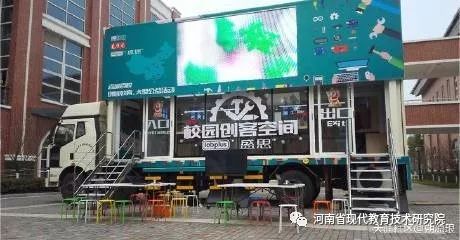
2. The Essence and Value of Maker Education
As a nascent concept, there are various interpretations regarding the essence of maker education. From the perspective of educational objectives, there are several representative viewpoints: ① “Competency or Spirit Theory.” In a narrow sense, maker education is an educational model aimed at cultivating the maker competencies of learners, especially young learners (the ability to create innovative products using both technological and non-technological means); in a broad sense, maker education should be an educational form aimed at fostering a public maker spirit. Some scholars also point out that maker education is actually a systematic educational philosophy, with the educational goal of cultivating well-rounded individuals possessing maker spirit and competencies. ② “Youth Maker Theory.” Maker education is a form of education conducted in maker spaces aimed at cultivating young makers, where maker spaces are places for makers to engage in creative activities, and makers are individuals or groups passionate about creativity, design, and manufacturing. ③ “Innovative Talent Theory.” Maker education is a new type of education that integrates information technology, adheres to the educational philosophy of “open innovation, inquiry-based experience,” and uses “learning through creation” as the main learning method, aiming to cultivate various types of innovative talents. Some scholars also suggest that maker education implements a series of comprehensive curricula focused on training innovative hands-on skills.
Although these discourses differ in wording, the basic viewpoints are the same. This study believes that maker education is a type of education aimed at cultivating young makers (objective) conducted in maker spaces (environment) and is a form of engineering education that cultivates students’ comprehensive practical abilities (goal) through creation (means). Furthermore, maker education’s essential characteristics can be understood from different angles: from the perspective of educational objectives, maker education is about cultivating innovative practical abilities and entrepreneurial awareness; from the perspective of educational content, maker education is interdisciplinary learning; from the perspective of educational subjects, maker education is a mixed-subject education; from the perspective of learning methods, maker education is learning through play and doing; from the perspective of technical support, maker education is primarily conducted using digital manufacturing tools such as educational robots and 3D printing. In summary, maker education, as a form of engineering education, is education through play, education through doing, education for entrepreneurial awareness, education integrating virtual and real aspects, interdisciplinary education, and mixed-subject education.
1. Education Through Play
The first tone of maker education is that it should be fun, and students should enjoy playing in maker spaces. This contains three layers of meaning: ① Allowing students to encounter various new “toys” and discover and solve problems during play. A basic experience is that children become extremely “focused” during play and develop various views and ideas about the objects they play with. ② DIY (Do It Yourself) their favorite “toys,” selecting and designing topics according to their preferences, which is the so-called education through doing. ③ Learning to share. Fun things need to be shared, and sharing leads to evaluation and improvement, inspiring further learning and creation. Thus, through the process of “play,” students can apply what they learn, feel the value of knowledge learning, gain a sense of achievement and joy from creation, and reach a state of learning through joy and joy through learning! As mentioned in the Analects: “To know is not as good as to love, and to love is not as good as to enjoy.” Knowledge, love, and joy are the three levels of learning; maker education must achieve joyful learning so that students can internally experience the joy of innovation and sharing, promoting the formation of their healthy personalities. In this sense, “maker education” implemented through formal subject courses, oriented towards exam scores or competitions, contradicts the original intention of maker education. Unfortunately, according to the aforementioned survey results, 44.93% of respondents reported that the maker spaces in their schools were primarily used for compulsory or school-based course teaching, which is a phenomenon that needs to be addressed.
2. Education Through Doing
Examining foreign maker education practices, the learning activities in maker education are usually project-based, and the learning outcomes are visualized, helping students develop self-motivation, planning, time management, autonomous learning, and group collaboration skills. This study also corroborates this from the survey, where 92.75% of respondents believe that the main value of maker education lies in cultivating students to create real things. In other words, maker education not only needs to be fun but also allows students to experience the complete process of inquiry and project creation, rather than merely following the teacher’s explanations step by step. Therefore, the significance of maker education lies not only in helping students use what they have learned to solve practical problems but also in actively discovering knowledge during exploration, creation, and change.
3. Education for Entrepreneurial Awareness
Just as the spirit advocated by Innovation 2.0, maker education encourages young people to turn what they like into shareable works or to gain a sense of achievement by realizing others’ ideas, forming the awareness and consciousness of being product creators. Therefore, maker education is also a forward-looking education. For instance, the maker education at Wenzhou Middle School has produced a group of makers who can sell their self-created works at the school science and technology festival, customizing personalized works based on student customers’ needs. Of course, in the context of basic education, education for entrepreneurial awareness does not mean directly cultivating entrepreneurs or requiring students to develop products with specific practical value, but rather fostering a “market awareness” in students, guiding them to think proactively about whether their creations have sharing value and whether they can attract the attention and liking of specific groups (parents, teachers, classmates, etc.), thus achieving a sense of self-fulfillment and making learning a continuous and proactive process.
4. Education Integrating Virtual and Real Aspects
Just as the fourth industrial revolution emphasizes the foundation of information-physical fusion systems, maker education is also a revolution in education that integrates virtual and real aspects. The integration of virtual and real primarily manifests in two aspects: first, in the learning environment, both online environments providing maker communication communities and learning resources and offline maker spaces for creative design and creation are needed; second, in the tools and objects of creation, not only are modeling and programming software required, but also the design ideas need to be realized into tangible models or products.
5. Interdisciplinary Education
The interdisciplinary nature of maker education fundamentally stems from the fact that it is a process of solving real engineering problems. Maker education is centered on technology, integrating knowledge from various subjects; it involves not only science and technology but also humanities and arts, making maker education an important way to implement STEM/STEAM education, beneficial for changing the current curriculum structure that overly emphasizes subject orientation and lacks integration. Numerous studies indicate that STEM education naturally occurs in maker spaces; maker education can effectively change the content and learning methods that students acquire in STEM and arts courses (STEAM); student makers strive to find content in STEM courses that can improve their projects, achieving project goals through interdisciplinary integration rather than confining themselves to a single subject.
6. Mixed-Subject Education
Due to the interdisciplinary characteristics of maker education, from the perspective of teacher subjects, it requires collaboration among teachers from multiple disciplines, and even parents with work experience in various industries can participate in guiding students. Survey results show that the subject backgrounds of maker education instructors in current primary and secondary schools mainly include information technology (85.51%), general technology (53.62%), physics (33.33%), mathematics (20.29%), biology (15.94%), and others (23.19%), highlighting the diversity of teacher professional backgrounds. From the perspective of student subjects, students from different grades and classes can form mixed maker groups with unique characteristics, exchanging thoughts, experiences, and knowledge. Clearly, maker education provides a beneficial supplement to the class-based teaching system.
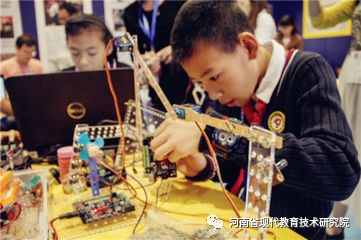
3. Forms of Implementing Maker Education in Primary and Secondary Schools
Although maker education cannot be confined to a subject-specific course format, as long as the essential characteristics of maker education are grasped, it can be developed in various forms according to time, place, and individuals.
3.1 Achieving Multi-level Penetration: From Subject Teaching to Practical Activities, from Group Activities to Club Activities
Does maker education need to be conducted in a course format? If we understand courses to include both subject courses and experiential courses (such as comprehensive practical activities), then maker education must be able to rely on courses for development. However, for maker education, its essence is an experiential course that should primarily be conducted in the form of comprehensive practical activities, while relevant subject courses mainly serve as a foundational support for maker education, among which technology courses, especially robotics courses, are essential precursor courses for conducting maker education. Broadly defined comprehensive practical activities can also include interest group activities (such as maker groups) and school club activities (such as technology clubs). In these different courses and activities, the student groups involved can vary, complementing each other’s strengths and achieving a combination of points, lines, and surfaces to collaboratively carry out maker education. Of course, regardless of the level of maker education, it is essential to grasp real engineering problems. However, many observed maker education projects are not so “real”, as people rack their brains to search for them, often resulting in creation for the sake of creation. How can we help student makers quickly find “real engineering problems”? Some believe that we should shift from traditional “academic-style problems” to “practical problems”—this is indeed a fundamental implementation principle. From an operational perspective, real problems do not naturally “exist”; they need to be refined and transformed by teachers and students. In fact, students’ daily life needs and discoveries, extracurricular tasks assigned by subject teachers, and various activity needs from classes and clubs should all become a valuable “problem pool”.
3.2 Achieving All-round Development: From On-campus Spaces to Off-campus Spaces, from Co-built Spaces to Shared Spaces
Is it necessary to have maker spaces to carry out maker education? Yes, spaces are essential. Schools can make different choices based on their locations, teaching staff, and economic conditions: they can build independent on-campus maker spaces; they can utilize the same space for other activities; or they can seek off-campus locations to collaborate on maker education. Regarding off-campus venues, there are two possibilities: one is to utilize regional maker education alliances to co-build and share maker spaces with advantageous schools; the other is to utilize social maker spaces, of which there are at least 100 cities in China with social maker spaces, many of which are public-oriented and can be used for maker education. Of course, for various spaces to achieve integration effects, more convenient channels are needed; hence, constructing an online-to-offline (O2O) interconnected resource sharing and collaborative communication platform is very necessary.
3.3 Achieving Wide-field Teaching: From Technology Teachers to Science Teachers, from Teachers to Parents
Is maker education solely the responsibility of information technology teachers? Currently, the main force behind school maker education is indeed information technology teachers, and few other subject teachers are involved. The historical reasons for this include the technical advantages of information technology teachers and their relatively young age, making them more open to new ideas. However, the interdisciplinary nature of maker education indicates that for it to achieve regular development, relying solely on information technology teachers is insufficient; teachers from related subjects such as general technology courses, science courses, and even art courses can all be connected to maker education. In addition, parents with work experience in different industries, especially in manufacturing, can also be recruited as external teaching staff for school maker education, making it more grounded; collaborations with social maker spaces can also invite professional makers to provide technical guidance in schools.
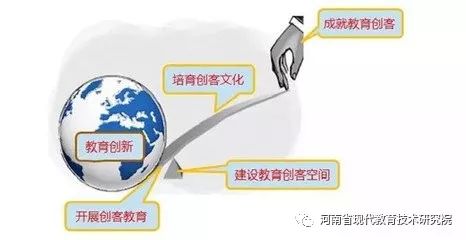
4. Support Systems for Promoting Maker Education in Primary and Secondary Schools
As a comprehensive education involving software and hardware, design and testing, production and experimentation, maker education differs from the implementation of other subject courses and requires systematic support.
4.1 Policy Support: Launch Core Competencies, Quality Evaluation, and Condition Construction Standards for Maker Education
Although maker education can cultivate students’ innovative practical abilities, it is still unclear which core competencies it can specifically cultivate. The lack of clear objectives hinders guiding the practice of maker education, thus requiring thorough research on the training objectives of maker education and clarifying its core competency system. Corresponding to the training objectives are learning quality evaluation standards; if the results of maker education cannot be reasonably evaluated, it will not only affect students’ motivation but also inevitably impact teachers’ enthusiasm for conducting maker education, leading to educational inequity. Furthermore, as an educational activity that requires equipment, it is necessary to establish corresponding standards in terms of facilities, equipment, personnel, and space, which should include indicators for educational functionality, qualified teaching staff, and technical thresholds for facilities and equipment. This is especially important because maker education primarily relies on open-source software and hardware, and different manufacturers have various materials and packaging methods for open-source hardware, some of which do not meet the health needs of adolescents, while others may hinder students’ creative activities or the dissemination of scientific knowledge, hence the urgent need for relevant standards. Of course, policy support should also reflect in the allocation of campus construction funds towards maker space construction.
4.2 Curriculum Support: Build Supporting Prerequisite Courses to Make Maker Education a Solid Foundation
Popularizing science and information technology courses and ensuring that students have good scientific and technological literacy are prerequisites for conducting good maker education. In this regard, the lack of information technology curriculum standards at the compulsory education stage has led to a generally low opening rate for information technology courses in primary and junior high schools; even in regions and schools where they are offered, normal class hours are often hard to guarantee. It is reasonable to argue that students lacking information literacy will struggle to meet the requirements of maker education.
4.3 Teacher Development: Cultivate and Train a Teaching Team Capable of Engaging in Maker Education and Establish Regional Maker Education Alliances
As a new phenomenon, building a teaching team is a primary task. According to the survey, the second biggest obstacle facing the construction of maker spaces in primary and secondary schools is the lack of teaching staff for maker education (69.57% of respondents selected this item). Educational authorities at all levels should provide special teacher training programs and focus on subjects related to information technology and some other disciplines that may be involved in maker education. Generally speaking, it is essential that teachers from subjects such as science, technology, and arts understand maker education, receive necessary training, and collaborate in conducting maker education. In addition, the educational research departments should play their research and coordination functions, actively carry out regional maker education research activities, and proactively establish regional maker education alliances to collaboratively advance regional maker education development.
4.4 Educational Evaluation: Conduct Various Forms of Evaluation Activities to Promote the Healthy and Sustainable Development of Maker Education
Incorporate it into the government’s educational supervision scope to strengthen the importance of maker education; include it in the regular teaching management evaluation category to respect teachers’ labor achievements; conduct student maker work competitions to encourage primary and secondary students to engage in creative activities; select exemplary maker education bases to promote widely, etc.
4.5 Environmental Construction: Optimize Resources and Build Maker Spaces According to Local Conditions
According to the survey, the biggest obstacle to the construction of maker spaces in primary and secondary schools is the lack of funding support (73.91% of respondents selected this item), with 79.71% of maker spaces relying on funding from educational bureaus or schools. Many teachers with dreams of maker education can only look on helplessly due to the lack of school funding support. According to our case study of the maker space at Wenzhou Middle School, one important reason for its successful development is that the leader of the maker space did not wait for school support but actively sought diverse sources of funding for construction. For example, this middle school successfully secured support from a well-known maker company, which not only donated 3D printers and some learning kits but also invited members of the maker space to participate in the annual Shanghai Maker Carnival and covered related expenses; they collaborated with a university’s educational information engineering research institute, which not only sent graduate students to the space for educational guidance but also provided direct funding support for purchasing equipment in the initial stages; with the approval of students’ parents, parents actively procured some components needed for their children’s creative works, alleviating the pressure of ongoing financial expenditures required for maker education; and they also built and shared maker spaces with nearby schools, exchanging resources. The experiences of Wenzhou Middle School undoubtedly offer valuable lessons for more schools in terms of developing under limited funding.
References:
[1] Ulrich Sendler. Industry 4.0 [M]. Beijing: Mechanical Industry Press, 2014:1.
[2] Song Gang, Tang Qiang, Chen Rui, et al. Technology Innovation from the Perspective of Complexity Science [J]. The Impact of Science on Society, 2008, (2): 28-32.
[3] Anderson C. Makers: The New Industrial Revolution [M]. New York: Random House, 2012:21.
[4] Johnson L, Adams Becker S, Estrada V, et al. NMC Horizon Report: 2014 Higher Education Edition [M]. Texas: The New Media Consortium, 2014:14.
[5] Johnson L, Adams Becker S, Estrada V, et al. NMC Horizon Report: 2014 K-12 Edition [M]. Texas: The New Media Consortium, 2014:8.
[6] Obama B. Remarks by the President on the “Education to Innovate” Campaign [EB/OL]. https://www.whitehouse.gov/the-press-office/remarks-president-education-innovate-campaign.
[7] Obama B. Presidential Proclamation: National Day of Making, 2014 [EB/OL]. https://www.whitehouse.gov/the-press-office/2014/06/17/presidential-proclamation-national-day-making-2014.
[8] Zhu Zhitian, Luo Liang. From the Maker Movement to Maker Education: Cultivating a Co-Creation Culture [J]. Research on Educational Technology, 2015, (7): 5-13.
[9] Zhang Maocong, Liu Xinyang, Zhang Chenying, Dong Yanyan. Maker Education: Essence, Function, and Realistic Reflection [J]. Modern Educational Technology, 2016, (2): 14-19.
[10] Zhong Baichang. How School Maker Spaces Transition from Ideal to Reality [J]. Research on Educational Technology, 2015, (6): 73-79.
[11] Yang Xianmin, Li Jihong. The Value Potential and Controversies of Maker Education [J]. Modern Distance Education Research, 2015, (2): 23-33.
[12] Fu Qian, Wang Cixiao. When Makers Meet STEAM Education [J]. Modern Educational Technology, 2014, (10): 37-41.
[13] Wu Junjie. The Maker Movement and STEM Education—An Interview with Maker Father Mitch Altman [J]. Information Technology Education for Primary and Secondary Schools, 2013, (12): 39-42.
[14] Peppler K, Bender S. Maker Movement Spreads Innovation One Project at a Time [J]. Phi Delta Kappan, 2013, (3): 22-27.
[15] Hlubinka M. Makerspace Playbook School Edition [EB/OL]. http://makered.org/wp-content/uploads/2014/09/Makerspace-Playbook-Feb-2013.pdf.
[16] Huang Ronghuai, Liu Xiaolin. Maker Education and Cultivation of Students’ Innovative Abilities [J]. Modern Educational Technology, 2016, (4): 12-19.
Reprinted from Jing Shi Academy Big Data
